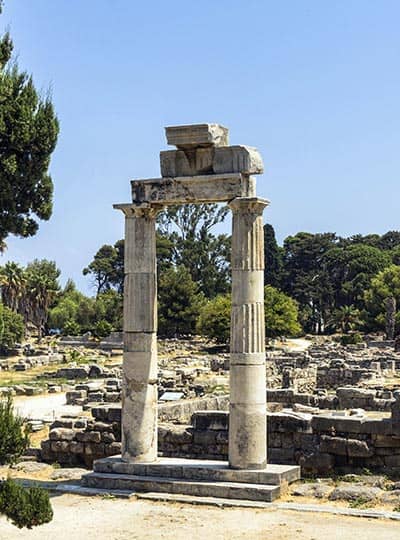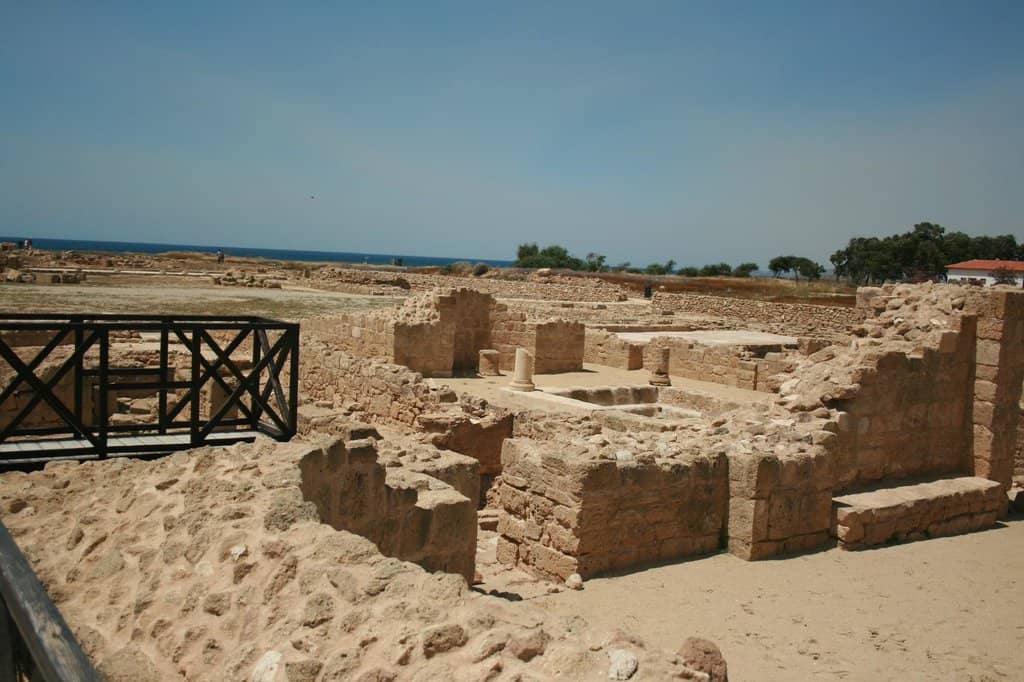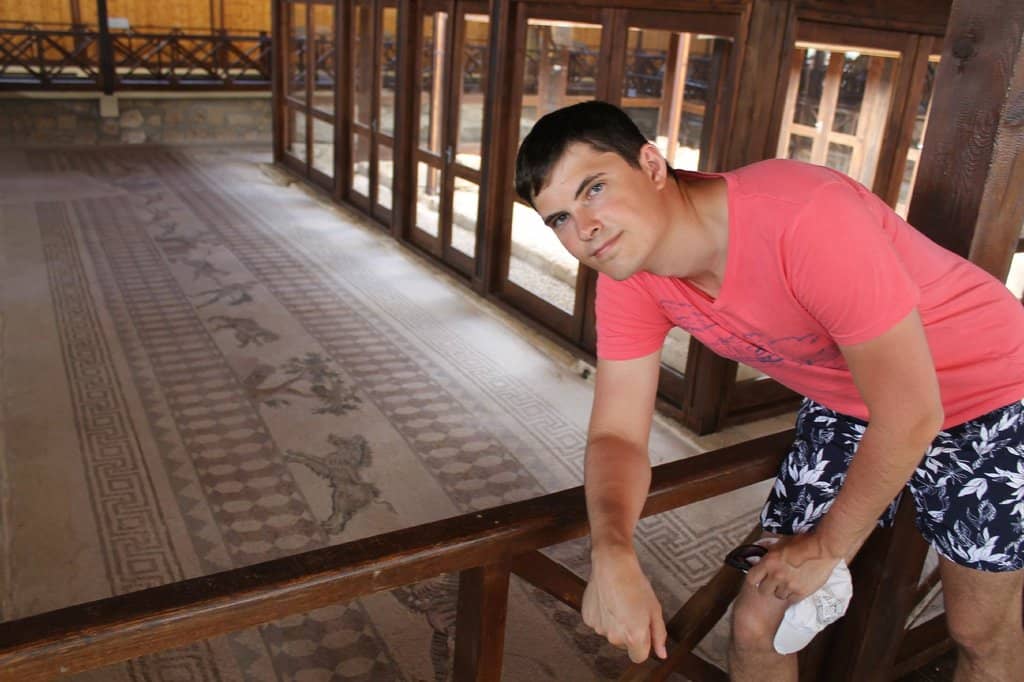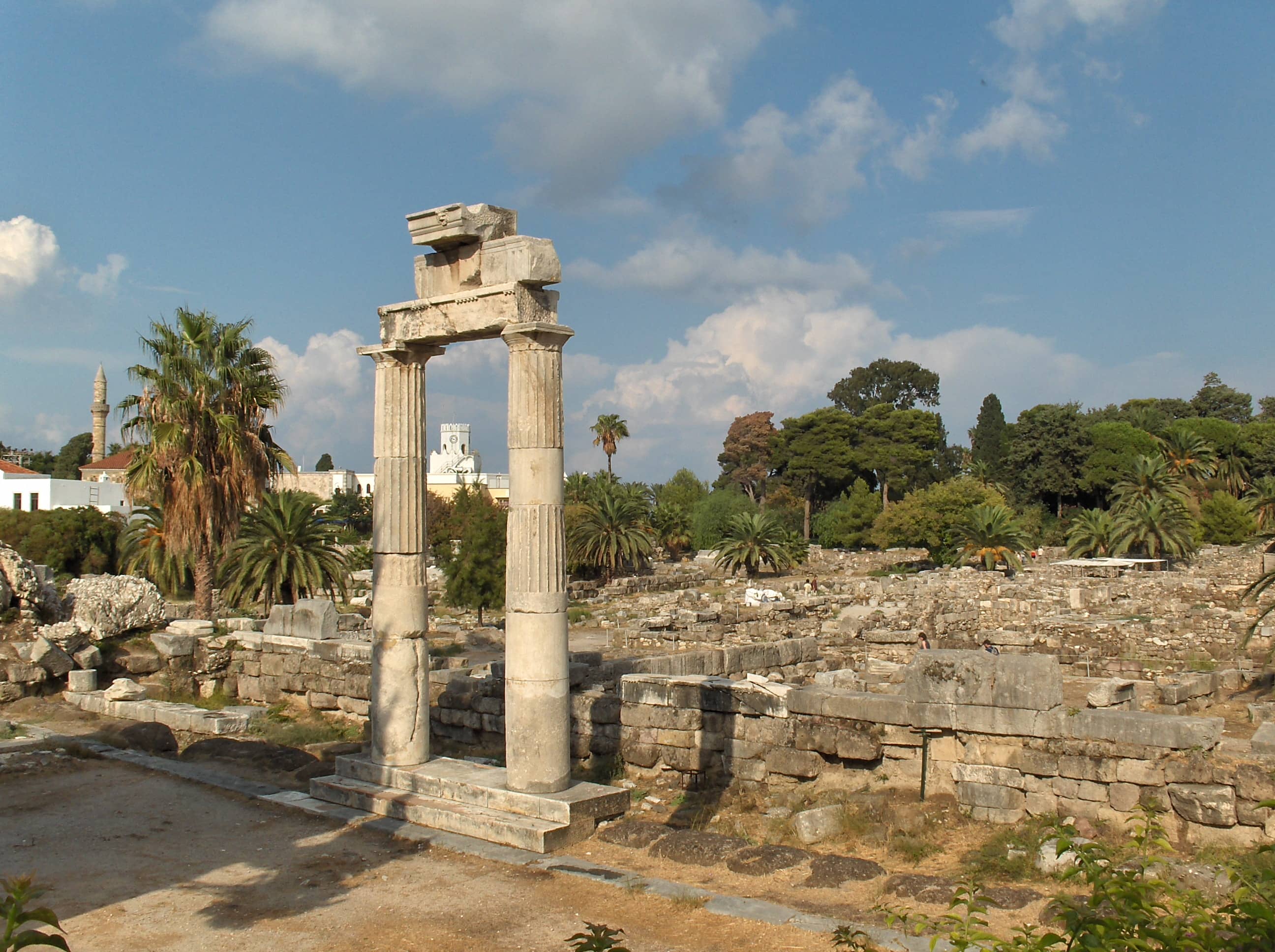
Altar of Dionysus Kos
Ancient stone remnants of a 2nd-century-BCE altar dedicated to Dionysus, offering a glimpse into Kos's past.

Highlights
Must-see attractions

Social
From TikTok & Reddit
Best Time
Free and accessible 24/7

Altar of Dionysus Kos
Best Time
Free and accessible 24/7

Highlights
Must-see attractions
Ancient stone remnants of a 2nd-century-BCE altar dedicated to Dionysus, offering a glimpse into Kos's past.
"One needs a lot of imagination to see something that simply is not there!"

Bring Your Imagination
Much of the site is speculative. Visualize the past glory of the temple dedicated to Dionysus. :thought_balloon:
Explore the Agora Too
Combine your visit with the Southern Agora ruins nearby for a richer historical context. :world_map:

Highlights
Discover the most iconic attractions and experiences

Remnants of the Altar
Near the Southern Agora
Stone fragments hinting at a 2nd-century-BCE temple dedicated to the god of wine. Requires imagination to visualize its past glory.

Well-Maintained Surroundings
Around the Altar
Despite the minimal ruins, the area is nicely kept with steps and blocks, offering a pleasant aesthetic.

Informative Signboard
At the site
A useful information board provides context and historical details about the altar's significance.
Plans like a pro.
Thinks like you
Planning Your Visit
Manage Expectations for Ruins
Combine with Nearby Sites
Best Times
Insider Tips
from TikTok, Instagram & Reddit
Bring Your Imagination
Much of the site is speculative. Visualize the past glory of the temple dedicated to Dionysus. :thought_balloon:
Explore the Agora Too
Combine your visit with the Southern Agora ruins nearby for a richer historical context. :world_map:
Free Admission
Enjoy this historical glimpse without any cost. Perfect for budget travelers. :moneywithwings:
Check for Rubbish
Some visitors note occasional rubbish. While maintained, it's good to be aware. :wastebasket:
Tips
from all over the internet
Bring Your Imagination
Much of the site is speculative. Visualize the past glory of the temple dedicated to Dionysus. :thought_balloon:
Explore the Agora Too
Combine your visit with the Southern Agora ruins nearby for a richer historical context. :world_map:
Free Admission
Enjoy this historical glimpse without any cost. Perfect for budget travelers. :moneywithwings:
Check for Rubbish
Some visitors note occasional rubbish. While maintained, it's good to be aware. :wastebasket:
What Travellers Say
Reviews Summary
Visitors find the Altar of Dionysus to be a free and accessible historical site, though its remains are minimal and require imagination. The well-maintained surroundings and informative signboard are appreciated, but some note disappointment with the lack of substantial ruins and occasional litter.
"One of the small sites you will find dotted around the town, especially this part of town there is about 7 within a few hundred metres this and the southern part of the Agora are located in a small park."
Dave T
"One needs a lot of imagination to see something that simply is not there!
And it's free because it would be hard to convince anyone to pay for a dozen rocks that may, or may not, have been from a temple dedicated to Dionysus. It's only a speculation.
I also noticed that most reviewers bundle up the entire Agora with the Altar of Dionysus, so it's not a fair comparison."
Globe Trotter
"Ruins are always special, my 3 stars is representative of the disappointment that the area amd history is not maintained and full of rubbish."
Amanda G
What People Like
What People Dislike
Frequently Asked Questions
🚇 🗺️ Getting There
The Altar of Dionysus is located in Kos Town, often near the Southern Agora. It's easily accessible on foot if you're exploring the town center. Public transport options for Kos Town are generally good, with buses connecting to various parts of the island.
Parking in Kos Town can be challenging, especially during peak season. It's advisable to look for public parking areas in the town center and walk to the site, which is relatively small.
🎫 🎫 Tickets & Entry
No, admission to the Altar of Dionysus is free. It's an open-air site accessible 24/7, making it a convenient stop for any itinerary. :ticket:
The Altar of Dionysus is accessible 24 hours a day, 7 days a week, as it is an open-air archaeological site. :clock1:
🎫 🧭 Onsite Experience
You'll find stone remnants believed to be from a 2nd-century-BCE altar dedicated to Dionysus. Much of it requires imagination to reconstruct its original form. :statueofliberty:
While the ruins themselves are minimal, the surrounding area is generally well-maintained with steps and blocks, offering a pleasant aesthetic. Some visitors have noted occasional rubbish. :sparkles:
Yes, there is a useful information signboard at the Altar of Dionysus that provides context and historical details about its significance. :scroll:
A visit to the Altar of Dionysus itself is very brief, likely only 10-15 minutes, especially if you read the signboard. It's best combined with exploring the nearby Southern Agora. :stopwatch:
📸 📸 Photography
Focus on capturing the texture of the ancient stones and the surrounding park-like setting. The information signboard can also be a good element to include for context. :camerawithflash:
Yes, the site is open and generally uncrowded, making it easy to take photos without obstruction. The well-maintained surroundings also provide a pleasant backdrop. :iphone:
For Different Travelers
Tailored advice for your travel style
👨👩👧 Families with Kids
It's best to combine this visit with the larger Agora ruins nearby, which offer more to explore visually. Keep expectations realistic about the 'wow' factor of the altar itself, and focus on the overall historical context and the pleasant environment. Ensure children are supervised, especially around any uneven ground or stone fragments. :child:
💰 Budget Travelers
Pairing this with a walk through the Southern Agora and other free public spaces in Kos Town allows for a rich historical experience without significant expense. Pack your own water and snacks to save on costs, and enjoy soaking in the ancient atmosphere at your own pace. :euro:
Deep Dives
In-depth insights and expert knowledge
Understanding the Altar of Dionysus
While the archaeological remains are modest, the area surrounding the Altar of Dionysus is often praised for its upkeep. Steps and blocks have been strategically placed, enhancing the visual appeal and making the site more accessible. This thoughtful landscaping ensures that even with limited ruins, the location remains pleasant to visit. The presence of an informative signboard further aids visitors, providing crucial historical context and details about the altar's significance, helping to bridge the gap between the scattered stones and the vibrant history they represent.
Given its free admission and open-air accessibility, the Altar of Dionysus is a convenient stop for those exploring Kos Town. It's often visited in conjunction with the nearby Southern Agora, allowing for a more comprehensive understanding of the ancient city's layout and public life. Travelers looking for grand monuments might be underwhelmed, but for those interested in the subtle layers of history and the quiet contemplation of ancient sites, it offers a unique experience.
Exploring the Kos Agora
Many visitors find that the Agora ruins provide a more substantial archaeological experience compared to the Altar of Dionysus alone. You can wander through the remnants of stoas, temples, and other public spaces, imagining the vibrant activity that once took place here. The scale of the Agora, though in ruins, hints at the importance of Kos as a center of trade and culture in the Hellenistic and Roman periods.
When visiting the Altar of Dionysus, make sure to allocate ample time to explore the adjacent Agora. This combination offers a richer historical narrative, moving from a specific religious site to the broader urban landscape. The contrast between the focused remnants of the altar and the sprawling ruins of the marketplace provides a dynamic way to engage with Kos's ancient heritage. Remember to wear comfortable shoes, as you'll be walking on uneven terrain.





Social
from TikTok, Instagram & Reddit